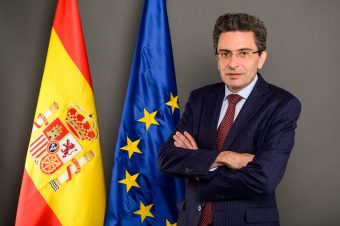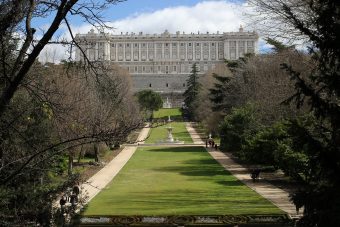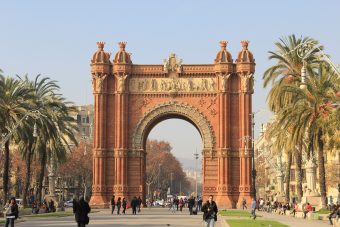
Spain is one of the European countries most concerned about climate change. The southern areas of this Mediterranean country are characterized by rather harsh climatic conditions, such as high temperatures, droughts, scarce rainfall and insufficient water. Nevertheless, the Spanish government is actively working to mitigate climate change, among other things, and to create a framework for sustainable growth that will enable the national economy to reach climate neutrality by 2050. The first step was the adoption of the Strategic Framework for Energy and Climate. The Ministry of Environmental Transition will also provide support through the financing of projects that meet certain criteria. Perhaps the most important condition is that the applied technology contributes to reducing dependence on fossil fuels. Energy storage within wind farms and solar power plants will also be financially supported, and priority will be given to projects located on the sites of closed coal-fired power plants. Simultaneously, the Spanish government has also committed to building 3,000 MW of wind and solar power plants over the next decade.
During the conversation with Spanish Ambassador to Serbia Raúl Bartolomé Molina, we sought to learn how the authorities plan to mitigate the vulnerability, increase the country’s security and resilience to climate change, and improve its ability to adapt to new and challenging climate and energy scenarios.

EP: According to the results of a survey conducted by Ipsos in March 2019, more than 50 percent of Spaniards considered global warming to be the most important environmental challenge facing Spain. What is being presented to the concerned public to mitigate the consequences of global warming in the future?
Raúl Bartolomé Molina: One of the key elements is adopting the National Integrated Energy and Climate Plan. It sets the path for decarbonization for the next decade and contains the following goals to be achieved by 2030, such as a 23 percent reduction in greenhouse gas emissions compared to 1990, and a 42 percent share of energy in final consumption from renewable energy sources, improving energy efficiency by 39.5 percent and 74 percent of the share of renewable energy in the electricity sector. These goals will enable the achievement of long-term goals, primarily climate neutrality by 2050, which means 100 percent of renewable sources in the electricity system and a reduction of at least 90 percent in the total emissions of greenhouse gases (GHG) compared to 1990.
In focus:
EP: The European Environment Agency (EEA) predicts that the largest increase in droughts in Europe will be in the Iberian Peninsula, contributing to a greater risk of desertification. What is the plan for adapting to these changes?

Raúl Bartolomé Molina: Most of the effects of climate change could be drastically reduced and prevented through adaptation programs. In this context, the recently adopted National Climate Change Adaptation Plan 2021–2030. defines 81 areas of action to build resilience and reduce damage in 18 sectors, including human health, water, natural heritage, biodiversity and protected areas, coasts and marine environment, forest protection, combating desertification, agriculture and livestock or food safety. These actions will have to evolve over the next decade and require legislative changes and profound structural reforms.
EP: Spain has launched an ambitious plan to switch to renewables by 2050 completely and soon after to completely decarbonize its economy. What measures have been taken and what remains to be done to achieve this goal?
Raúl Bartolomé Molina: Spain is strongly committed to achieving climate neutrality by the middle of the century, taking the lead in implementing the Paris Agreement and the international community’s commitments. In this regard, the Bill on Climate Change and Energy Transition – currently being debated in the Spanish Parliament – includes a significant range of ambitious targets to reduce greenhouse gas emissions and switch to renewable energy sources by 2050. To achieve this goal, it has been determined that by 2030, at least 35 percent of the final energy consumption should be from renewable sources. It can be achieved by expanding the network of electric vehicles, changing the mode of transport, using the electric railway instead of freight transport, or changing the energy source with lower emissions in the residential, industrial and service sectors. Moreover, the Spanish electricity system must be 70 percent renewable by 2030 to reach the set goal of 100 percent by 2050. This goal will require installing new renewable energy production capacities, and sufficient reserve capacities to guarantee the security of supply. Besides, energy efficiency measures will have to reduce primary energy consumption by at least 35 percent, for example through systems implemented in new construction projects and the renovation of existing buildings and the application of new industrial processes.

EP: Coal-fired power plants in the EU are closing, and Spain has two that are still operating. Are they expected to close in the coming years?
Raúl Bartolomé Molina: Spain closed many thermal power plants in a short period and reduced their use by 69 percent in two years. In 2020 alone, seven thermal power plants in Spain ceased to operate. Their closure is justified for environmental and economic reasons because they are the main source of pollution and are not economically sustainable.
However, the social consequences of these measures are not negligible and should be addressed appropriately. Therefore, the recent closure of coal-fired power plants has taken place in the spirit of an intensive process marked by strong social dialogue to ensure a fair transition of jobs and regions, so that no one is left out. As you pointed out, there are still some coal-fired power plants operating, and we are making continuous efforts to reorganize and further develop coal-rich areas. Therefore, the closure of the remaining power plants is not expected in the next few years, until all economic, environmental and social aspects are considered and fully resolved.
Interview by: Jovana Canic
Read the whole interview in the new issue of the Energy portal Magazine SMART CITIES, december 2020 – february 2021.
